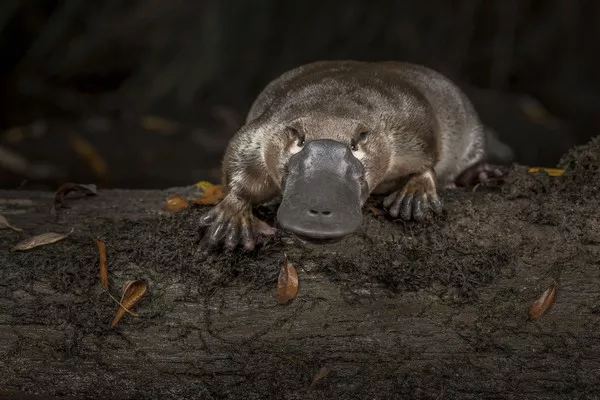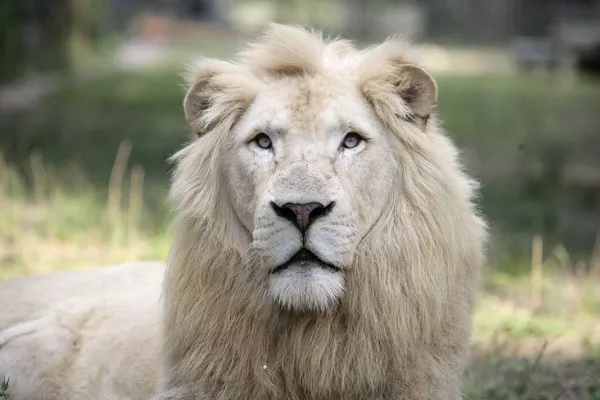From the depths of the ocean to the highest peaks of the mountains, our planet is home to an incredible diversity of life. While many animals may seem familiar, there are some truly extraordinary creatures that stand out for their unique characteristics and adaptations. In this article, we’ll take a closer look at 13 of the most unique animals in the world, exploring their remarkable features, habitats, and the fascinating ways they have evolved to survive in their environments.
13 Most Unique Animals in the World
1. Axolotl (Ambystoma mexicanum)
Unique Feature: Regenerative Abilities
Habitat: Lakes and canals in Mexico
Description: The axolotl, also known as the “Mexican walking fish,” is a unique amphibian renowned for its remarkable regenerative abilities. Unlike most amphibians, axolotls retain their larval features throughout their lives, including external gills and a fully aquatic lifestyle. They have the remarkable ability to regenerate lost limbs, organs, and even parts of their brain and spinal cord, making them a subject of interest for scientists studying regenerative medicine.
2. Platypus (Ornithorhynchus anatinus)
Unique Feature: Duck-Billed Mammal
Habitat: Rivers and streams in Australia
Description: The platypus is perhaps one of the most bizarre and unique mammals in the world. With its duck-like bill, webbed feet, and egg-laying reproductive system, the platypus defies traditional mammalian characteristics. It is one of only five species of monotremes, mammals that lay eggs instead of giving birth to live young. The platypus is also equipped with electroreceptors in its bill, allowing it to detect the electric fields generated by its prey underwater.
3. Aye-Aye (Daubentonia madagascariensis)
Unique Feature: Long, Skeletal Middle Finger
Habitat: Forests of Madagascar
Description: The aye-aye is a bizarre and elusive primate known for its unusual appearance and foraging behavior. It has large, round eyes, bat-like ears, and a long, thin middle finger that it uses to tap on trees and extract insects from crevices. The aye-aye is the world’s largest nocturnal primate and is considered a symbol of bad luck in Madagascar due to its eerie appearance.
4. Pink Fairy Armadillo (Chlamyphorus truncatus)
Unique Feature: Pink, Plated Shell
Habitat: Deserts of Argentina
Description: The pink fairy armadillo is one of the smallest and most elusive species of armadillo, measuring only 3 to 4 inches in length. It is named for its delicate, pink-colored shell, which is covered in overlapping plates that provide protection from predators and help regulate body temperature. Despite its small size, the pink fairy armadillo is an adept burrower, using its powerful claws to excavate tunnels in the sandy desert soil.
5. Okapi (Okapia johnstoni)
Unique Feature: Zebra-Like Stripes and Giraffe-Like Neck
Habitat: Rainforests of the Democratic Republic of Congo
Description: The okapi is a fascinating and elusive mammal often referred to as the “forest giraffe” due to its resemblance to both giraffes and zebras. It has a dark brown coat with white horizontal stripes on its legs and hindquarters, similar to a zebra. The okapi’s long neck and tongue are reminiscent of a giraffe, allowing it to reach leaves and branches high in the forest canopy. Despite its giraffe-like appearance, the okapi is more closely related to the giraffe’s distant cousin, the extinct sivatheres.
6. Shoebill (Balaeniceps rex)
Unique Feature: Large, Shoe-Shaped Bill
Habitat: Wetlands of Central and East Africa
Description: The shoebill is a large, prehistoric-looking bird known for its distinctive shoe-shaped bill, which can grow up to 9 inches in length. It uses its massive bill to catch fish, frogs, and other aquatic prey in the shallow waters of its wetland habitat. Despite its imposing appearance, the shoebill is surprisingly elusive and difficult to spot in the wild.
7. Star-Nosed Mole (Condylura cristata)
Unique Feature: Star-Shaped Array of Tentacles on Its Nose
Habitat: Wetlands of eastern North America
Description: The star-nosed mole is a small, semi-aquatic mammal known for its remarkable tactile sense and unique nasal appendages. It has 22 fleshy, pink tentacles arranged in a star-shaped pattern around its nose, which it uses to detect prey and navigate its underground tunnels. The star-nosed mole is one of the fastest foraging mammals, capable of identifying and consuming prey in as little as 230 milliseconds.
8. Goblin Shark (Mitsukurina owstoni)
Unique Feature: Elongated, Protrusible Jaws
Habitat: Deep-sea environments worldwide
Description: The goblin shark is a rarely seen and poorly understood species of deep-sea shark known for its bizarre appearance and unique feeding behavior. It has a long, flattened snout with protrusible jaws that can extend outward to capture prey. The goblin shark’s jaws are equipped with sharp, nail-like teeth designed for grasping slippery prey such as fish and cephalopods. Its pinkish-gray skin and prominent, beady eyes give it a decidedly otherworldly appearance.
9. Tufted Deer (Elaphodus cephalophus)
Unique Feature: Fang-Like Canines and Tufted Ears
Habitat: Mountain forests of China and Myanmar
Description: The tufted deer is a small, elusive species of deer known for its distinctive appearance and unusual features. It has short, dark fur with white spots and a prominent tuft of hair on its forehead, giving it a somewhat comical appearance. The most striking feature of the tufted deer is its long, fang-like canines, which protrude downward from its upper jaw. These teeth are used primarily for display during mating rituals and territorial disputes rather than for feeding.
10. Dumbo Octopus (Grimpoteuthis)
Unique Feature: Large, Ear-Like Fins
Habitat: Deep-sea environments worldwide
Description: The dumbo octopus is a group of deep-sea octopuses named for their distinctive ear-like fins, which resemble the ears of the Disney character Dumbo the elephant. These fins are used for locomotion, allowing the dumbo octopus to gracefully navigate the ocean depths. Unlike other octopus species, the dumbo octopus lacks an ink sac and relies on its ability to blend into its surroundings for defense against predators.
11. Blue Dragon Nudibranch (Glaucus atlanticus)
Unique Feature: Bright Blue Coloration and Wing-Like Appendages
Habitat: Open ocean waters worldwide
Description: The blue dragon nudibranch is a small, strikingly beautiful sea slug known for its vibrant blue coloration and wing-like appendages. It floats upside down on the surface of the ocean, using its cerata (wing-like structures) to trap air bubbles for buoyancy. The blue dragon nudibranch feeds primarily on Portuguese man o’ war and other cnidarians, storing their stinging cells in its cerata for defense against predators.
12. Amazonian Royal Flycatcher (Onychorhynchus coronatus)
Unique Feature: Elaborate Crested Head Feathers
Habitat: Rainforests of Central and South America
Description: The Amazonian royal flycatcher is a small, colorful bird known for its striking plumage and elaborate crest of feathers on its head. During courtship displays, the male flycatcher erects its crest and performs acrobatic flight maneuvers to attract a mate. The female flycatcher builds a unique hanging nest that resembles a small, woven basket, which is suspended from the branches of trees in the rainforest canopy.
13. Fossa (Cryptoprocta ferox)
Unique Feature: Cat-Like Appearance and Agile Climbing Abilities
Habitat: Forests of Madagascar
Description: The fossa is a unique and elusive carnivore native to the island of Madagascar. Resembling a cross between a cat and a mongoose, the fossa has a slender body, sharp claws, and a long, bushy tail. It is an agile climber and skilled hunter, preying on a variety of small mammals, birds, and reptiles in the dense rainforest understory. Despite its cat-like appearance, the fossa is actually more closely related to mongooses and belongs to its own unique family, Eupleridae.
See Also: The World’s 10 Favorite & Most Popular Animals In 2024
Conclusion
In conclusion, the world is home to an astonishing array of unique and fascinating animals, each adapted to its own specialized niche in the natural world. From the depths of the ocean to the remote corners of the earth, these extraordinary creatures serve as a testament to the diversity and resilience of life on our planet. As scientists continue to explore and study these remarkable animals, we gain a deeper understanding of the complex web of life that sustains us all.
You Might Be Interested In:
























